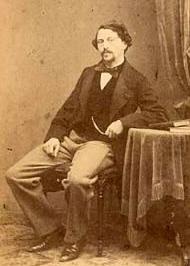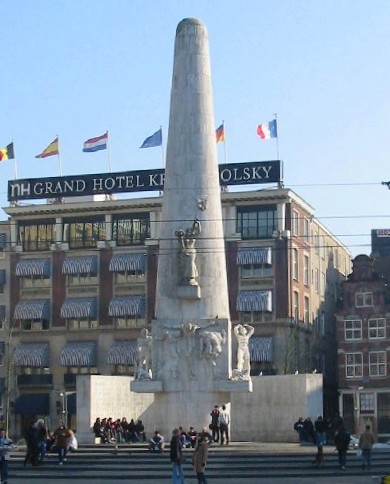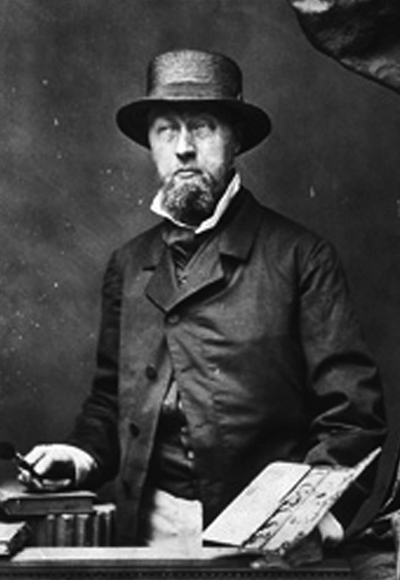|
Teylers Tweede Schilderijenzaal
The Tweede Schilderijenzaal, or Painting Gallery II, is one of two art gallery rooms in Teylers Museum. The Tweede Schilderijenzaal was built in 1893 as an extension of the first gallery. History In 1884 the expansion of the museum, called "Nieuwe Museum" (New Museum), with the addition of the entrance on the Spaarne and the new Fossil rooms, had just been completed to commemorate 100 years of exhibits in the Oval Room. The only part of the museum that had not profited from the expansion was the painting gallery, and this was finally done in 1893 by the regular building crew that the museum kept on hand for renovations. The new gallery was not only meant for extra exhibition space on the walls, but tables were set up for print and drawing viewing in the portfolio holders, a practice which has been kept up until today, although the prints in the viewing portfolios are now copies rather than originals. Paintings List of painters in alphabetical order, accompanied by an example han ... [...More Info...] [...Related Items...] OR: [Wikipedia] [Google] [Baidu] |
Isaac Israëls
Isaac Lazarus Israëls (3 February 1865 – 7 October 1934) was a Dutch painter associated with the Amsterdam Impressionism movement. Biography The son of Jozef Israëls, one of the most respected painters of the Hague School, and Aleida Schaap, Isaac Israëls displayed precocious artistic talent from an early age. Between 1880 and 1882 he studied at the Royal Academy of Art, The Hague, where he met George Hendrik Breitner who was to become a lifelong friend. In 1881, when he was 16, he sold a painting, ''Bugle Practice'', even before it was finished to the artist and collector Hendrik Willem Mesdag. Two portraits he made in the same year of his grandmother and a family friend, Nannette Enthoven (below), attest to the technical ability he had attained by that age. Starting in 1878, Israëls made annual visits to the ''Salon des Artistes Français'' with his father and in 1882 made his debut there with ''Military Burial''. In the 1885 ''Salon'' he received an honourable m ... [...More Info...] [...Related Items...] OR: [Wikipedia] [Google] [Baidu] |
Louwrens Hanedoes
Louwrens Hanedoes (14 July 1822, Woudrichem - 9 February 1905, Woudrichem) was a Dutch landscape painter; in the Romantic style at first, later turning to Realism. Biography From 1839 to 1840, he studied at the Royal Academy of Art with Cornelis Kruseman and Barend Cornelis Koekkoek,Profile @ the Rijksbureau voor Kunsthistorische Documentatie who was especially influential on his style. From the beginning, he preferred landscapes, travelling to mountainous areas such as the Pyrenees, Switzerland and the Eifel. His favorite spots in the Netherlands were Arnhem and Oosterbeek. Shortly after 1850, he became one of the first Dutch painters to visit Barbizon, @ Thuis in Brabant. where he was strongly influenced by the |
Louis Apol
Lodewijk Frederik Hendrik (Louis) Apol (6 September 1850 in The Hague - 22 November 1936 in The Hague) was a Dutch painter and one of the most prominent representatives of the Hague School. Apol's talent was discovered early in his life and his father ordered private lessons for him. His teachers were J.F. Hoppenbrouwers and P.F. Stortenbeker. He received a scholarship from the Dutch King Willem III in 1868. Apol specialized in winter landscapes; people are seldom depicted in his paintings. He mostly painted snowy forest landscapes with subtle man-made artefacts, such as a bridge or fence. In 1880 Apol took part in an expedition on the SS ''Willem Barents'' to Spitsbergen in the Arctic Ocean. The impressions of this journey were a source of inspiration during his whole life. His work is widely spread and found in the USA, Canada, United Kingdom, Belgium, Germany and the Netherlands. The Rijksmuseum Amsterdam and the Gemeentemuseum Den Haag have work of Louis Apol in their coll ... [...More Info...] [...Related Items...] OR: [Wikipedia] [Google] [Baidu] |
Julius Van De Sande Bakhuyzen
Julius Jacobus van de Sande Bakhuyzen (18 June 1835, in The Hague – 21 October 1925, in The Hague) was a Dutch etcher and painter in the Hague School. He was a member of a number of artists' associations, such as Arti et Amicitiae and Pulchri Studio. Biography Julius took his first art lessons from his father, Hendrik van de Sande Bakhuyzen, who was a painter. Julius studied at the Royal Academy of Art in The Hague. In 1871 he won the royal medal at an exhibition in Amsterdam with his painting 'Pond in the Hague Forest'. From 1875 he spent most summers in Drenthe, often with his sister Gerardine, who also painted. His works include mainly landscapes, with trees often playing a prominent role. Public collections * Rijksmuseum Amsterdam The Rijksmuseum () is the national museum of the Netherlands dedicated to Dutch arts and history and is located in Amsterdam. The museum is located at the Museum Square in the borough of Amsterdam South, close to the Van Gogh Museum, the ... [...More Info...] [...Related Items...] OR: [Wikipedia] [Google] [Baidu] |
Jozef Israëls
Jozef Israëls (27 January 1824 – 12 August 1911) was a Dutch painter. He was a leading member of the group of landscape painters referred to as the Hague School and, during his lifetime, "the most respected Dutch artist of the second half of the nineteenth century." Youth He was born in Groningen, of Jewish parents. His father, Hartog Abraham Israëls, intended for him to be a businessman, and it was only after a determined struggle that he was allowed to embark on an artistic career. He studied initially from 1835 to 1842 at the Minerva Academy in his home town Groningen. Jozef Israëls at the He continued his studies subsequently in ... [...More Info...] [...Related Items...] OR: [Wikipedia] [Google] [Baidu] |
John Rädecker
John Rädecker (5 December 1885, Amsterdam – 12 January 1956, Amsterdam) was a painter and sculptor from the northern Netherlands, best known for his Monument on the Dam. Biography According to the RKD he was a pupil of Bart van Hove and a member of various painting societies such as the '' Hollandse Aquarellisten Kring'' and the Haarlem-based De Groep, as well as being a sculptor.John Rädecker in the The has a portrait of his daughter by his hand on show in their " |
Johannes Joseph Destrée
Johannes Josephus Destrée (27 March 1827 in Laeken - 17 March 1888 in The Hague) was a Belgian landscape artist. Biography According to the RKD he was a pupil of Bartholomeus Johannes van Hove and Andreas Schelfhout who later joined the Pulchri studio. He travelled to Germany and worked in Oosterbeek, near Arnhem. Image:Destrée 2.jpg, ''A ship moored near a Dutch town'' File:Johannes Josephus Destree (1827-1889.JPG, A view of Arnhem, collection Teylers Museum References Johannes Josephus Destreeon Artnet Artnet.com is an art market website. It is operated by Artnet Worldwide Corporation, which has headquarters in New York City, in the United States, and is owned by Artnet AG, a German publicly traded company based in Berlin that is listed on t ... External links * ''Thieme-Becker.Allgemeines Lexikon der bildenden Künstler von der Antike bis zur Gegenwart'' Belgian landscape painters Dutch painters Dutch male painters 1827 births 1888 deaths People from ... [...More Info...] [...Related Items...] OR: [Wikipedia] [Google] [Baidu] |
Johannes Christiaan Karel Klinkenberg
Johannes Christiaan Karel Klinkenberg (1852, The Hague – 1924, The Hague), was a 19th-century Dutch painter. Biography According to the RKD he was a pupil of Christoffel Bisschop (1828-1904) and Louis Meijer, and became a member of the Pulchri studio who later won many prizes.Johannes Christiaan Karel Klinkenberg in the A street is named after him in the neighborhood of streets named after 19th and 20th century Dutch painters in -Noord, Amsterdam. |
Johan Van Hell
Johannes "Johan" Gerardus Diederik van Hell (February 28, 1889 – December 31, 1952) was a Dutch visual artist and musician. His work was included in the 1939 exhibition and sale ''Onze Kunst van Heden'' (Our Art of Today) at the Rijksmuseum in Amsterdam. He was a dedicated socialist and a man with a highly developed social conscience. Many of his later works depict the struggles and plight of ‘the man in the street’. In 1925, he decided to produce lithographs to make art available at a reasonable price to the working class. He also gave free private art and music lessons to gifted students who could not afford the tuition. His art ''oeuvre'' is varied, ranging from oil paintings, water colours, wood cuts and lithographs to political posters, ''ex-libris'' and magazine and book covers and illustrations. He also received regular commissions from the City of Amsterdam for monumental art. His music was at least as important to him as his art. His instrument was the clarinet ... [...More Info...] [...Related Items...] OR: [Wikipedia] [Google] [Baidu] |
Johan Jongkind
Johan Barthold Jongkind (3 June 1819 – 9 February 1891) was a Dutch painter and printmaker. He painted marine landscapes in a free manner and is regarded as a forerunner of Impressionism. Biography Jongkind was born in the town of Lattrop in the Overijssel province of the Netherlands near the border with Germany. Trained at the art academy in The Hague under Andreas Schelfhout, in 1846 he moved to Montparnasse in Paris, France where he studied under Eugène Isabey and François-Édouard Picot. Two years later, the Paris Salon accepted his work for its exhibition, and he received acclaim from critic Charles Baudelaire and later on from Émile Zola. He was to experience little success, however, and he suffered bouts of depression complicated by alcoholism. Jongkind returned to live in Rotterdam in 1855, and remained there until 1860.Oxford Art Online: "Johan Barthold Jongkind" Back in Paris, in 1861 he rented a studio on the rue de Chevreuse in Montparnasse where some of ... [...More Info...] [...Related Items...] OR: [Wikipedia] [Google] [Baidu] |
Jan Hendrik Weissenbruch
Jan Hendrik Weissenbruch, also known as Hendrik Johannes Weissenbruch (born 19 June 1824 in The Hague – died 24 March 1903 in The Hague) was a Dutch painter of the Hague School. He is noted especially for his watercolours. Biography Hendrik Johannes Weissenbruch, also known as Jan Hendrik, was born in The Hague on 19 June 1824, the second son of Johannes Weissenbruch and Johanna Hendrika Zaag. He came from an artistic family. His father Johannes, a chef and restaurateur, painted in his free time and collected art on a small scale. Among Johannes' collection were works by Andreas Schelfhout and Bartholomeus van Hove. Johannes' cousin Jan (1822–80) was a well-known painter of townscapes. Another cousin Frederik Hendrik (1828–87) was a lithographer, while his younger brother Frederik Johan, his uncle Daniel and his nephew Isaac (1826–1912) were all engravers.de Leeuw ''et al'' p. 275 When Jan was sixteen years old he received drawing lessons from Johannes Low. In 1843, he ... [...More Info...] [...Related Items...] OR: [Wikipedia] [Google] [Baidu] |
.jpg)





